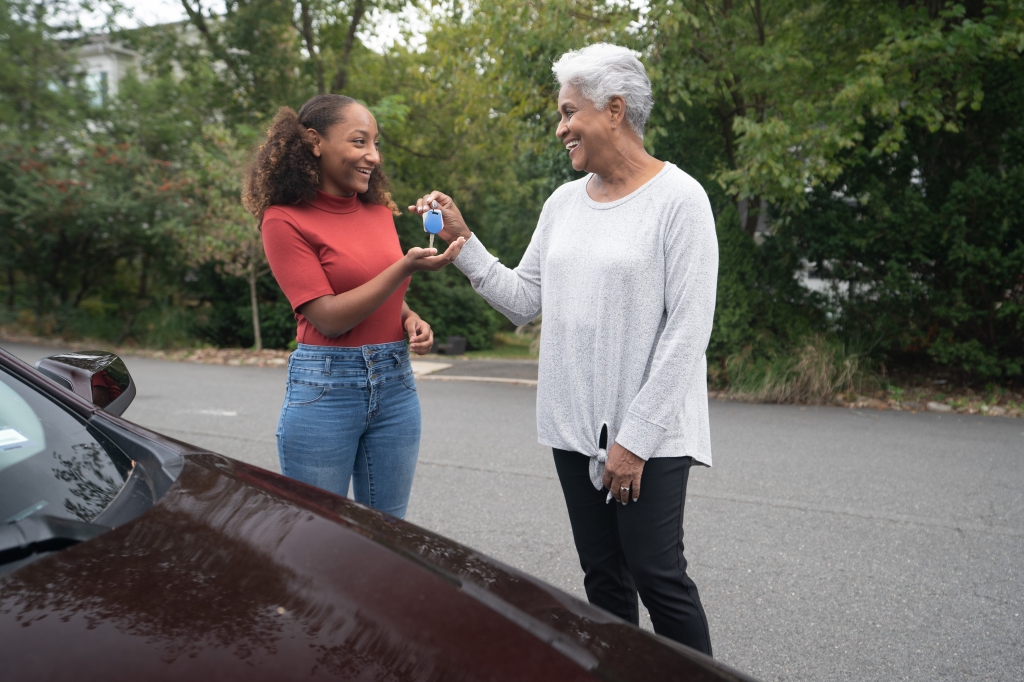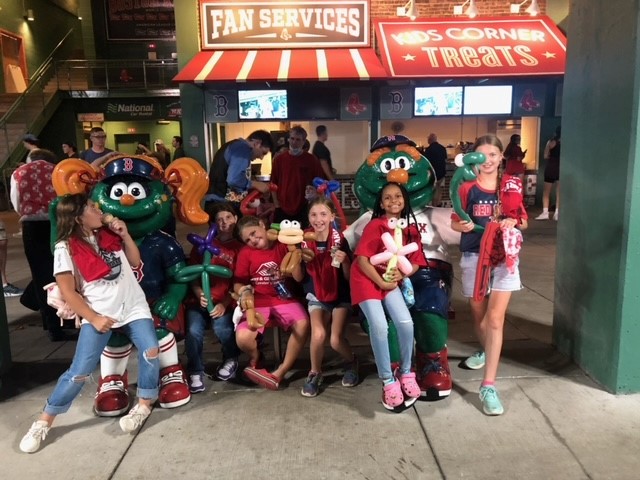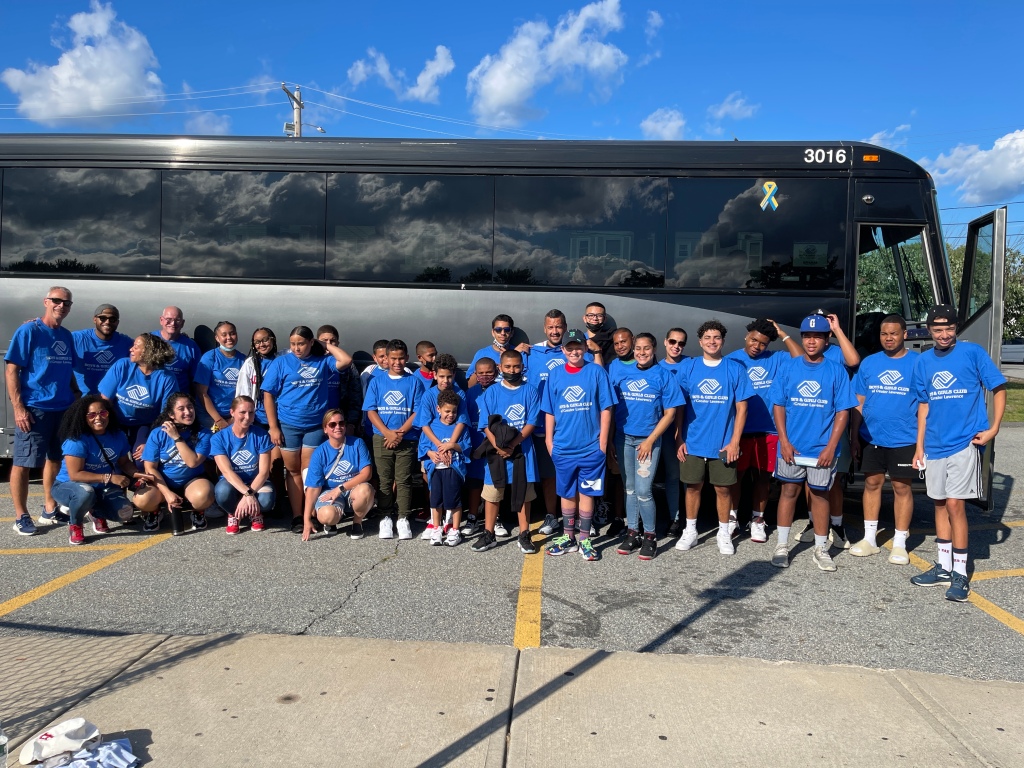Archive
How should I ready my vehicle for winter driving? 6 Tips for getting your vehicle ready for winter weather.

- Check Your Tires
Make sure your tires are at recommended PSI. Check your owner’s manual if you are not sure what number it is. Inspect your tread depth and replace if necessary. Worn tires create a dangerous situation in winter weather. Snow tires are also an important consideration. If you need to be on the road regardless of weather conditions, we strongly recommend snow tires—there are no short cuts or substitutions for snow tires. The tread is specially designed to break up and disperse the snow versus it building up as it does on a conventional tire. If you get snow tires from us, we will even store your summer tires over the winter.
- Inspect Windshield Wipers
Do you recall the last time you replaced your windshield wiper blades? If not, then it is time to have them replaced. This is an item that is often overlooked until the blade cracks or splits. It is such an important feature and very inexpensive to replace, so don’t wait, do it today. Visibility is crucial in wintry/rainy conditions. Check your wiper fluid and make sure it is full. We recommend keeping a gallon of windshield solvent in your trunk. Nothing is worse than running out of washer fluid when you are on the highway in bad weather! - Check Battery
Have your battery checked to make sure connections are corrosion-free and that it has sufficient water. If your battery is more than 3 years old, have it tested to make sure it still holds a charge. Replace if needed. - Winter Oil Change
Make sure your oil has the right viscosity for wintertime. Check your owner’s manual for guidance on which oil is right for cold temperatures. - Inspect Belts and Hoses
Make sure they are in good condition as cold weather can cause extra wear and tear. - Pack a Winter Emergency Kit
Have a supply of essentials in case you get stuck in your vehicle in the winter months. This should include items such as an ice scraper/snow brush, emergency flasher/flares, a first aid kit, water, non-perishable food, cellphone charger, window breaker/seatbelt cutter tool, and duct tape.
Jaffarian is here to help you with any of your winterizing needs. Our service and parts departments are stocked with the essentials and we are happy to answer any questions or concerns you may have. Contact us to book an appointment, and we’ll get your vehicle ready for winter!
Safe Driving!
What can parents do to make sure teen drivers are safe on the road?

This is an important question, and in fact, Oct. 16-22 is National Teen Driver Safety Week. Because teenagers are involved in triple the number of fatal accidents compared to all other drivers, Congress established National Teen Driver Safety Week in 2007. Of course, safe driving is a topic for every week when you have teen drivers, but this week has been dedicated to raising awareness, providing education and seeking solutions to prevent teen accidents, injuries and fatalities on the road.
The 3 greatest dangers for teen drivers are as follows:
- Distracted and drowsy driving
Distracted driving is “anything that takes your HANDS off the wheel, your EYES off the road and your MIND off the task of driving”. Between the lure of cell phones, music and friends as passengers, a teen can easily be distracted from driving safely. Make sure your teens are aware of this and focus on always paying full attention to the road. Encourage them to put away electronic devices while in the car.
Drowsy driving is another danger as 50% of drowsy driving accidents involve drivers under 25. Teenagers require more sleep than adults, yet often stay up late at night and get up early for school. Make sure your teens get enough sleep if they are going to be driving. - Inconsistent or no seat belt use
This is common sense, yet many teens think they don’t need to wear seat belts. Statistically, not wearing a seat belt makes you 30 times more likely to be ejected from a vehicle during a crash. And, more than 75% of people ejected die from their injuries. Parents are in control and can enforce the rule of no seat belt, no car keys. Also, it’s good to remind any passenger, but especially teens, to wear a seatbelt if using a ride share. Serious injury and in some instances, deaths could have been avoided if a seatbelt had been worn. - Speeding
As we all know, young people can feel invincible and also are susceptible to peer pressure. Hence, speeding is a factor in nearly 30% of teen crashes with fatalities. Make sure your teen knows you will not tolerate speeding, and that car privileges will be revoked for any infractions.
Please make sure you have conversations this week and regularly with your teen drivers about the rules of the road and how important they are to follow when behind the wheel or traveling in a vehicle.
At Jaffarian, we are here to help you keep your vehicles safe and in good repair for you and all the drivers in your family. October is also a good time to make sure vehicles are ready for cold weather.
Relevant sources for more information on teen driver safety:
https://www.teendriversource.org/advocacy-education/national-teen-driver-safety-week
https://youth.gov/announcements/national-teen-driver-safety-week
What can I do to make sure my child passengers are safe in the car?

A timely question, as National Child Safety Week is September 18-24 and the kids are back in school. No one likes to think about it but, unfortunately, according to the National Highway Traffic Safety Administration (NHTSA), automotive accidents are a leading cause of fatality for children aged one to 13. However, many of these could have been prevented simply by drivers making sure they followed common sense rules – children who were unrestrained or improperly restrained accounted for too many of these tragedies.
Jaffarian Volvo Toyota would like to remind you of some of the most important steps you can take to make sure your young passengers are safe when in an automobile. If you don’t have young children, please share this important information with family and friends who do
One of the most important things you can do is to get the right type of car seat for your child and the right fit for your vehicle. Of course, this includes using seat belts correctly, as well. Saturday, September 24 is National Seat Check Saturday. Contact your local police department, fire department or hospital or go to Mass.gov or beseatsmartnh.org for information on inspection sites near you to have your car seat checked. This is a complementary service and well worth the time to stop by and have the peace of mind that your car seats are properly installed.
More information related to this topic is easy to find on government sites such as the CDC and NHTSA sites.
As always, Jaffarian is here to help you with any vehicle needs, maintenance and repairs. Safe travels!
What can I do to drive safer now that schools will be back in session?

That is an important question as the kids go back to school in our area. Here are some tips on sharing the road.
- In school zones and residential neighborhoods, drive with extra vigilance.
- Watch for running children or bikes coming out of driveways or from behind parked cars.
- Keep your attention on the road and surroundings, and do not be distracted by calls, texts or other distractions in your vehicle.
- Always stop for crossing guards holding up a stop sign or signaling.
- Pedestrians always have right of way in a school zone crosswalk.
- Never pass other vehicles stopped for pedestrians.
- Observe and obey posted school zone speed limits, which are 20 mph in MA and 10 mph below the normal posted limit in NH (in effect 45 minutes prior to and after school is in session.)
- Never pass a stopped school bus from behind or from the opposite direction on an undivided road. If the lights are flashing and the stop arm is out, all traffic must stop.
- Stay at least 100 feet back from a school bus when it is loading or unloading.
Also, if you are driving near a high school or college, be aware that many young drivers are on the road and have far less experience than you do. Be careful, patient and drive with extra care.
If you have any maintenance issues, including windshield wipers or tires that have excessive wear, contact Jaffarian, and we can help you make sure your vehicle is safe for you, your passengers and others on the road
How Do I Get My Car Ready for Summer Travel? 7 Tips to be Ready for Summer Fun.

That’s a great question! Summer is in full swing, but there’s still plenty of time for summer road trips. Here are 7 tips to make sure your vehicle is ready to go and if we can help you with any or all of these tips, please contact us, we’re here to help make sure your vehicle is ready to get on the road!
- Check your tires and tire pressure
Make sure all four tires have plenty of tread and that there are no bulges, tears, or gouges in the sidewalls. Always inflate tires to the manufacturer’s recommended pressure. See our video on How to Check Your Tire Pressure for details. - Test and listen to your brakes
If you feel any vibration or hear a grinding sound when applying the brakes, you should take your vehicle in for a brake inspection. Any leaks or mechanical failure in the brakes, including pads, rotors, shoes and drums, should be repaired immediately. - Battery Test
Get your battery tested to make sure it is full and that all connections are tigh - Check All Fluids
Check and top off engine oil and other fluids, including coolant. - Windshield Wipers
Inspect wiper blades and replace if signs of wear. Make sure windshield washer fluid reservoir is full. - Check belts and hoses
Get a visual check and replace any that are cracked or frayed. Have a service technician do this if you are not familiar. - Check the AC
Make sure your AC is running cool and change the air filter if needed. Take a test drive and if there has been a decrease in cooling, take your car to your service center for diagnosis and repairs.
Most of all, take your time and plan your route ahead of time. Adhering to the posted speed limits and using cruise control will assist with fuel economy. Lastly, don’t forget the snacks!
Safe travels!
How can I minimize the costs of driving?

This is a timely question as continued rising fuel prices have people wondering how to reduce the costs of operating a vehicle. With increased spending necessary just to fill the tank, drivers wonder if they should put off spending money on car repairs and maintenance.
The answer to that is “No.” Taking care of your vehicle actually saves you money both on fuel costs as well as long-term expenses. Of course, there are additional things you can do to conserve fuel such as taking it easy on accelerating from a stop and driving at 55MPH on the highway. But, keeping a close eye on maintenance for your vehicle will actually save on fuel costs as well. And it is an investment that can pay off by extending the life of your vehicle.
Whoever thought filling the gas tank would cost $100? With gas prices continuing to rise, we all look for ways to save. While we can’t affect the price at the pump, taking care of your vehicle and ensuring it is operating at optimal efficiency will save you money over time. For more information on how to reduce total costs of operating your car, SUV or truck, both in the short-term and long-term, see our tips on How to Get Better Gas Mileage.
We are here to help you make informed decisions about servicing your vehicle. Visit us in Haverhill or call us at 866-937-8658.
Hit, Run, Score! Boys & Girls Clubs Witness Red Sox Win
August 31, 2021, Haverhill — More than 70 members of the Greater Haverhill and Lawrence Boys & Girls Clubs were treated to a Red Sox game on August 24, thanks to the Jaffarian Volvo Toyota’s commitment to community. Coach buses shuttled youth to Fenway Park for an exciting game in which the Sox defeated the Minnesota Twins 11-9. Jaffarian treated all of the members to a Fenway frank and a drink.
With Halloween next week, how can I ensure the safety of my kids as they hit the streets to go door-to-door? Of course, they will be accompanied by an adult.
 Gary Jaffarian speaks to the importance of driving slowly in neighborhoods on Halloween and shares great tips for a safe and happy Halloween on how to keep your kids safe as they head out for trick or treating hours.
Gary Jaffarian speaks to the importance of driving slowly in neighborhoods on Halloween and shares great tips for a safe and happy Halloween on how to keep your kids safe as they head out for trick or treating hours.
The most important answer to your question is really a message to those who leave work to drive home on Halloween. Please DRIVE SLOWLY in your neighborhood and on all back roads, as children, teens and parents will be out in force going door-to-door. You may be hungry and tired, but nothing is worth the risk of a potential accident or hitting a trick-or-treater. The sun sets about 5:50 p.m. on Halloween, making the trick or treating the Halloween hours include the darkness.
Tips for Drivers:
• Be aware of which night your town is celebrating the holiday (refer to list below) and know that there are many young children out during those hours and drive slowly!
• Be aware that young trick-or-treaters may dart out from between parked cars.
• Never drive while wearing a mask. Your visibility could be obscured.
• No distracted driving! Of course, no looking at the cell phone or other electronic devices—keep your eyes on the road.
• Have a designated driver if you are attending a Halloween party where alcohol is served.
Tips for parents to keep your children safe:
• Wear a costume that makes it easy to walk, see and be seen. Make sure it’s not too long so that your children will not trip. Make sure all masks allow for normal visibility. Black or dark costumes or body suits make it more difficult to be seen. Bright colors are best.
• An adult should always accompany smaller children. It’s best to take them out earlier in the evening.
• Carry a flashlight and make sure that some sort of reflective material or the popular glow light stick are incorporated into all costumes. Your children will be happy to get a glow stick!
glow light stick are incorporated into all costumes. Your children will be happy to get a glow stick!
• Establish ground rules with children that are too old to be accompanied by an adult, including teens. Such rules could include: what neighborhoods to go to, staying in a group, what time they must come home, and appropriate behavior while trick-or-treating. Be sure they bring a cell phone in case of an emergency. They can use their cell phone light or carry a flashlight or at least a glow stick.
• Always use sidewalks when available. If there are no sidewalks, walk facing traffic.
• Never dart out between parked cars. Always cross at the corners or at crosswalks.
• An outside light on at the front of the house is usually a sign that trick-or-treaters are welcome. Avoid going to houses that are not lit. Never enter any home unless it’s a family member or a friend.
• Allow an adult to inspect all treats prior to eating them. Throw out any treats that appear tampered with. Do not allow homemade treats to be eaten unless you are sure of the source.
• Parents, avoid using your cell phone so you can keep a close watch on the children without any distractions.
Each city and town have various set hours and days to trick-or-treat as follows:
• Haverhill—Saturday, October 28 from 5-7 p.m. to celebrate the holiday, which will eliminate the commuters on the road.
• Andover— Tuesday, October 31 from 5-7 p.m.
• No. Andover— Tuesday, October 31 from 5:30-7:30 p.m.
• Lawrence—Tuesday, October 31 from 5-7 p.m.
• Salem, NH— Tuesday, Oct. 31 from 6-8 p.m.
• Plaistow, NH— Tuesday, October 31 from 5:30-7:30 p.m.
• Newton, NH— Tuesday, October 31 from 5-8 p.m.
• Amesbury— Tuesday, October 31 from 5:30 p.m. to 8:30 p.m.
• Boxford— Tuesday, October 31 from 5 p.m. to 8 p.m.
• Danvers— Tuesday, October 31 from 6 p.m. to 8 p.m.
• Georgetown— Tuesday, October 31 from 5 p.m. to 7 p.m.
• Newburyport– Tuesday, October 31 from 5:30 p.m. to 7:30 p.m.
Downtown Newburyport trick or treat at shops—Friday, October 27th from 4-5 p.m.
• Peabody— Tuesday, October 31 from 5 p.m. to 8 p.m.
• Rowley— Tuesday, October 31 from 5:30-7:30 p.m.
• Salem, MA— Tuesday, October 31 from 5-8 p.m. (if you dare! It’s the #1 most popular Halloween destination in the country!)
• Salisbury— Tuesday, October 31 from 5:30-7:30 p.m.
Check with your local paper, police or town hall for your town’s hours, if it’s not listed above.
 Have a Happy Halloween from all of us at Jaffarian Volvo Toyota—and most of all drive safely, be safe and have fun!
Have a Happy Halloween from all of us at Jaffarian Volvo Toyota—and most of all drive safely, be safe and have fun!
Gary Jaffarian
How can I get my teen driver to understand the importance of safety, like not texting or getting in a car with anyone who text or drinks and drives?
 During this week of National Teen Driver Safety Week, Gary Jaffarian shares important information for parents of teenagers.
During this week of National Teen Driver Safety Week, Gary Jaffarian shares important information for parents of teenagers.
First, some important and scary facts to know and share with your teenager:
• Motor vehicle crashes are the leading cause of death for teens (15 to 18 years old) in the United States – ahead of all other types of injury, disease, or violence.
• There were 1,972 teen drivers involved in fatal motor vehicle traffic crashes in 2015; and an estimated 99,000 teen passenger vehicle drivers were injured in motor vehicle traffic crashes in the U.S.
National Teen Driver Safety Week is October 15-21 and this week provides an opportunity for all of us as parents to talk with their teenagers about the important rules to follow to be safe when behind the wheel of a passenger car, truck, or SUV. The National Highway Transportation Safety Administration (NHTSA) identifies the 5 greatest dangers for teens as the following: (note there is little to no difference as the dangers for adults so we can all benefit from this week!):
1. alcohol
2. inconsistent use or no use of seat belts
3. distracted driving mostly from cell phone use or driving drowsy
4. speeding
5. number of passengers. The higher the number of passengers in a teen’s vehicle, the higher the number of accidents.
Teens buckle up less frequently than adults do. In 2013, over half of teens (ages 15-19) killed in crashes were NOT wearing a seat belt. It’s also impacting their younger passengers: when teens aren’t wearing their seat belts, 90 percent of their young passengers (ages 13-19) who die in crashes also aren’t restrained. Teens need to know that wearing a seat belt can make the difference between life and death.
For teens, driving means freedom and independence. They feel they’ve grown up. But even the brightest, most conscientious teens find themselves in danger on the road simply because they lack experience behind the wheel.
In Massachusetts and N.H. you can be pulled over for texting and driving and both states do not allow teens to drive with a cell phone in their hands. There is a penalty for first timers.
Not only for the sake of insurance costs, it is important for your teen to have both classroom and on-the-road driving instruction. Even if you think your teens aren’t listening, they usually do. Set the rules before they hit the road and be firm. Consider consequences as a way to reinforce the importance of following the law (seat belts) and making good decisions (e.g., not speeding and not driving impaired).
1. No Drinking and Driving — Talk about the fact that it’s illegal to drink before you’re 21—and that mixing alcohol and driving, or driving under the influence of any drug, is unacceptable at any age. Almost one out of five teen drivers (20%) involved in fatal crashes had been drinking.
2. Buckle Up — The vehicle should not move until everyone is buckled up—front seat or  back, on every trip, every time. In 2015, 58 percent of the 531 passengers who died in passenger vehicles driven by teen drivers were not wearing seat belts. When the teen driver was unbuckled, 84 percent of those passengers were also unbuckled.
back, on every trip, every time. In 2015, 58 percent of the 531 passengers who died in passenger vehicles driven by teen drivers were not wearing seat belts. When the teen driver was unbuckled, 84 percent of those passengers were also unbuckled.
3. No Distractions – Driving is the first and only task when behind the wheel. That means no phones or texting while driving, and not doing anything else—like eating and drinking or fixing hair and makeup—when you should be 100 percent focused on driving. About 10 percent of all teen drivers involved in fatal crashes were distracted at the time of the crash.
4. No Speeding — Speeding is a critical issue for all drivers, especially for teens who lack the experience to react to changing circumstances around their cars. More speed means less time to react. About one-third of all fatal teen-driver crashes involved speeding. Make sure that your teen knows that the rule is to obey the posted speed limit at all times.
5. Passengers — Passengers increase a teen’s risk for a fatal crash. That’s because other passengers can distract an inexperienced teen driver. States including Mass. and N.H. have regulations for junior drivers’ passengers as noted below restricting the number of passengers.
Massachusetts Teen Driving Requirements for a Junior Operator License (ages 16 ½-18) help parents insure safe driving:
• Teens must have had a learner’s permit for a minimum of 6 months.
• Teens must pass a behind-the-wheel road test and complete a State of Massachusetts approved driver education program with 12 hours on the road behind the wheel training; 6 hours in the car observing other student drivers; and 2 hours of parent or legal guardian attendance during driver education.
• Complete a minimum of 40 hours supervised on the road driving or 30 hours on the road supervised driving if they have completed a driver skills development program.
• May not drive with passengers under the age of 18 that are not immediate family  members for the first 6 months unless they are accompanied by licensed driver that is a minimum of 21 years of age with a minimum of 1 year of driving experience. The adult license holder must occupy the front passenger seat next to the Junior Operator.
members for the first 6 months unless they are accompanied by licensed driver that is a minimum of 21 years of age with a minimum of 1 year of driving experience. The adult license holder must occupy the front passenger seat next to the Junior Operator.
• Teens may not drive between the hours of 12:30 AM to 5:00 AM unless they are accompanied by a parent or legal guardian.
New Hampshire considers a junior operator until age 18 with the following restrictions and by law cannot operate a vehicle:
1. between the hours of 1:00 a.m. and 4:00 a.m.
2. with more than one passenger less than 25 years of age who is not a member of the driver’s family unless accompanied by a licensed, responsible adult who is at least 25  years of age during the first six (6) months holding the license.
years of age during the first six (6) months holding the license.
3. with more passengers than seat belts or safety restraints in the vehicle.
These laws help minimize teen accidents. Toyota has a TeenDrive 365 website for parents where you can pledge to be the kind of driver you want your teens to be. They believe teens follow in their parents’ footsteps…if you talk on the phone while driving, they will want to as well, despite the fact it is legal for adults. AAA also has teen driver safety information on their website.
Some parents try leaving “love notes” in their teens backpack or lunch to remind them to drive carefully or not ride with a teen who may be texting. Nothing may work better than knowing you have motivation to come home safely to your family. Let your young driver know that obeying the rules of the road is a prerequisite for the privilege of driving. This is the one time when you need to be both firm and loving and let your teens know there is no room for a margin of error when it comes to driving. Good luck having that important conversation—and not just this week, but on an ongoing basis.
All of us at Jaffarian Volvo Toyota want your teens to be safe on the road.
Gary Jaffarian
How do I check the air in my tires? How do I know the correct tire pressure? I’m not sure how to use those air pumps at gas stations.
 Gary Jaffarian explains how to check your tire pressure. Read this blog to learn how to use a gauge or fill the tires at the gas station and where to check how much air you need in your tires in summer vs. winter. Better still —- he can tell you where to get them checked and filled for free!
Gary Jaffarian explains how to check your tire pressure. Read this blog to learn how to use a gauge or fill the tires at the gas station and where to check how much air you need in your tires in summer vs. winter. Better still —- he can tell you where to get them checked and filled for free!
This is a great question especially this time of year when the temperature is changing and tire pressure is affected. Some of you may be seeing an indicator on your dashboard. How do I check the air in my tires? How do I know the correct tire pressure? I’m not sure how to use those air pumps at gas stations.
Some of you may be seeing an indicator on your dashboard indicating tire pressure is low: a symbol that looks like an exclamation mark inside brackets or parentheses (pictured here).  It is important to address low tire pressure as it affects gas mileage and will cause uneven wear and other conditions. If tire pressure is too low, then too much of the tire’s surface area touches the ground, which increases friction between the road and the tire. As a result, not only will your tires wear prematurely, but they also could overheat. Overheating can lead to tread separation — which could cause a serious accident.
It is important to address low tire pressure as it affects gas mileage and will cause uneven wear and other conditions. If tire pressure is too low, then too much of the tire’s surface area touches the ground, which increases friction between the road and the tire. As a result, not only will your tires wear prematurely, but they also could overheat. Overheating can lead to tread separation — which could cause a serious accident.
It is important to address low tire pressure as it affects gas mileage and will cause  uneven wear and other conditions. If tire pressure is too low, then too much of the tire’s surface area touches the ground, which increases friction between the road and the tire. As a result, not only will your tires wear prematurely, but they also could overheat. Overheating can lead to tread separation — which could cause a serious accident.
uneven wear and other conditions. If tire pressure is too low, then too much of the tire’s surface area touches the ground, which increases friction between the road and the tire. As a result, not only will your tires wear prematurely, but they also could overheat. Overheating can lead to tread separation — which could cause a serious accident.
 One option is to buy a tire pressure gauge. This is a handy gadget that will tell you the tire pressure in each tire.
One option is to buy a tire pressure gauge. This is a handy gadget that will tell you the tire pressure in each tire.
The second option is to use air pumps at a local gas station. Some stations have attendants that will assist you while others charge (usually quarters).
Before you use a tire pressure gauge or go to a gas station, you should confirm what your recommended tire pressure is. To find that information, open the driver’s side door and look at the information on the label in the door jam.
How to use the gas station air pumps:
1. Remove the cap or stems from the tire valve on the tire(s) you want to check, one at a time.
2. Use your tire gauge to check the air pressure in the tire.
3. Use the air hose to add air in short bursts.
4. Keep checking the pressure until you get it right.
If you’re not sure how to use a tire pressure gauge, place the pressure gauge on the valve stem and press down hard enough so the hiss sound disappears and your gauge provides a reading. With a standard gauge, the air pressure will push a small bar out from the bottom of the gauge.
If you would like to have your tires checked and filled by a professional or certified technician, make sure to stop at a dealership like Jaffarian Volvo Toyota. We will be happy to check it for you Monday through Saturday. We’re just two minutes off Route 495, Exit 49 (River St. exit) at 600 River St. in Haverhill. It is a good idea to have your vehicle serviced as the weather changes and get your tires and your brakes checked. Drive safely.
Gary Jaffarian








